In 2020, the Holocaust Museum acquired more than 50 previously unknown images from Sobibor that had been the property of camp deputy commandant Johann Niemann. These photos, part of a larger collection donated by Niemann's descendants, provide never-before-seen views of the killing center, including photos of barracks buildings, workshops, and SS and Ukrainian guards.
Some of the images depict Sobibor personnel laughing and posing for vanity shots all while implementing the mass murder of at least 167,000 innocent Jews. Niemann was killed during the Sobibor prisoner revolt on October 14, 1943, after which the camp was closed and demolished.
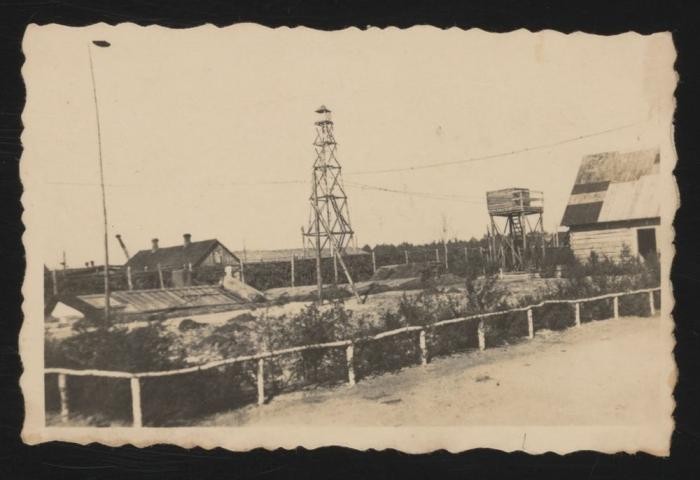
A view of the Sobibor killing center, taken in spring 1943 from the German personnel living quarters. To the left of the high fire-alarm tower (center) was the camp bakery. The arm of the excavator, which removed the bodies from the mass graves, is visible over the roof. The barrack on the right-hand side of the picture served as lodging for the Trawniki men. From the watchtower on the left, they monitored the deportees on their way to the gas chambers.
This photo comes from a collection donated by the descendants of Sobibor deputy camp commandant Johann Niemann. The images in the collection provide never-before-seen views of the killing center, including photos of barracks buildings, workshops, and SS and Ukrainian guards. The album complements and re-enforces the testimonies of the few Jewish survivors of this notorious camp. Niemann was killed during the Sobibor prisoner revolt on October 14, 1943, after which the camp was closed and demolished.
Item View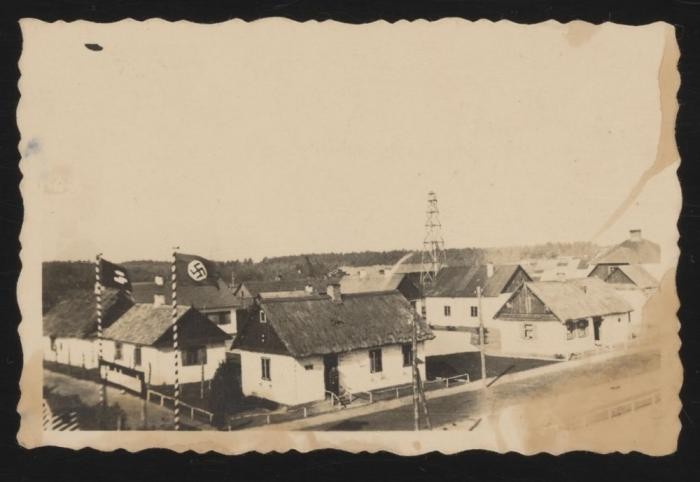
View of the German personnel living quarters at the Sobibor killing center entrance. This photograph was taken in the spring of 1943, from the watchtower at the camp's entrance.
This photo comes from a collection donated by the descendants of Sobibor deputy camp commandant Johann Niemann. The images in the collection provide never-before-seen views of the killing center, including photos of barracks buildings, workshops, and SS and Ukrainian guards. The album complements and re-enforces the testimonies of the few Jewish survivors of this notorious camp. Niemann was killed during the Sobibor prisoner revolt on October 14, 1943, after which the camp was closed and demolished.
Item View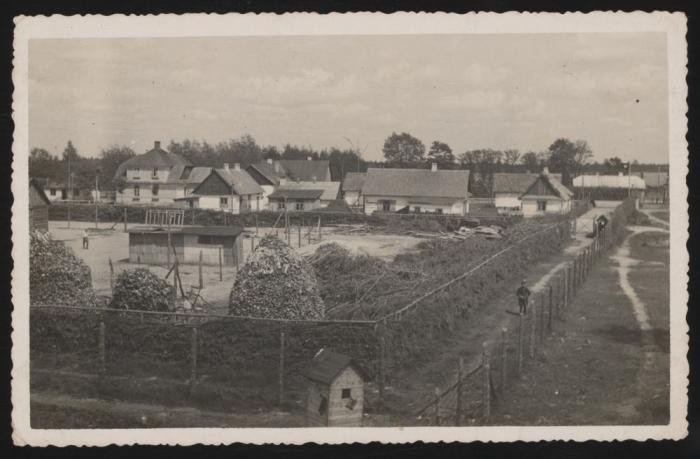
View of the Sobibor killing center and the German personnel living quarters, taken from a watchtower in the early summer of 1943.
A Jewish forced laborer can be seen standing next to the barrack on the left side of the images, as well as in the foreground between the stacks of firewood. On the right, in the passageway between the camp fences, two Trawniki men patrol. The light roof of the railway building is visible between the fence lines.
This photo comes from a collection donated by the descendants of Sobibor deputy camp commandant Johann Niemann. The images in the collection provide never-before-seen views of the killing center, including photos of barracks buildings, workshops, and SS and Ukrainian guards. The album complements and re-enforces the testimonies of the few Jewish survivors of this notorious camp. Niemann was killed during the Sobibor prisoner revolt on October 14, 1943, after which the camp was closed and demolished.
Item View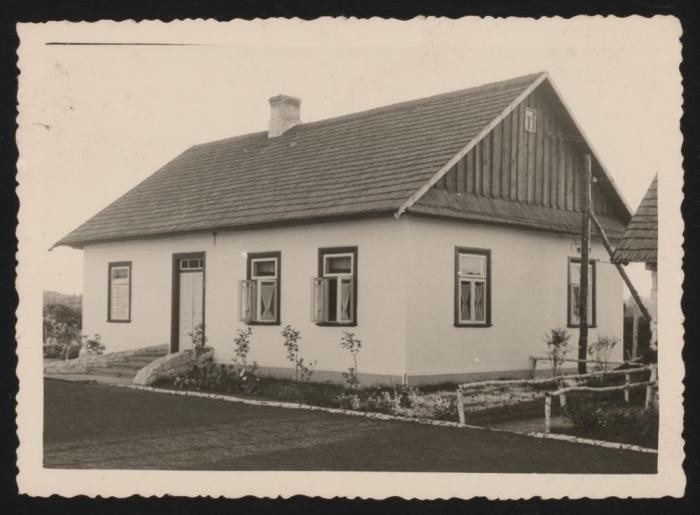
View of the old officers' dining room at Sobibor (known as the "Kasino"). This photograph was taken in the summer of 1943, after the building was renovated. The building served as a dining room for the Germans and as lodgings for the camp commanders. Deputy camp commandant Johann Niemann also lived there.
This image comes from an album and collection kept by Johann Niemann, who became deputy commandant of the Sobibor killing center after holding positions in the "euthanasia" program and in other camps.
Item View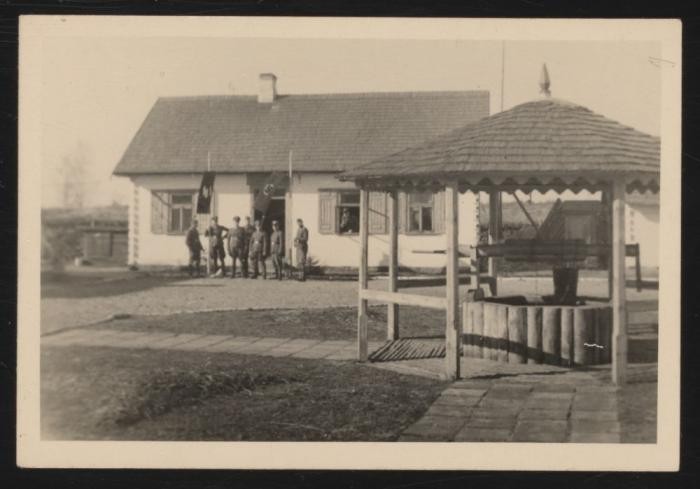
A group photograph with Johann Niemann (third from left) standing in front of the old officers' dining room (known as the "Kasino") in Sobibor, spring 1943. There is a well in the foreground of the picture.
Behind the dining room, the roof the first assembly point for deportees arriving at Sobibor is visible.
This image comes from an album and collection kept by Johann Niemann, who became deputy commandant of the Sobibor killing center after holding positions in the "euthanasia" program and in other camps.
Item View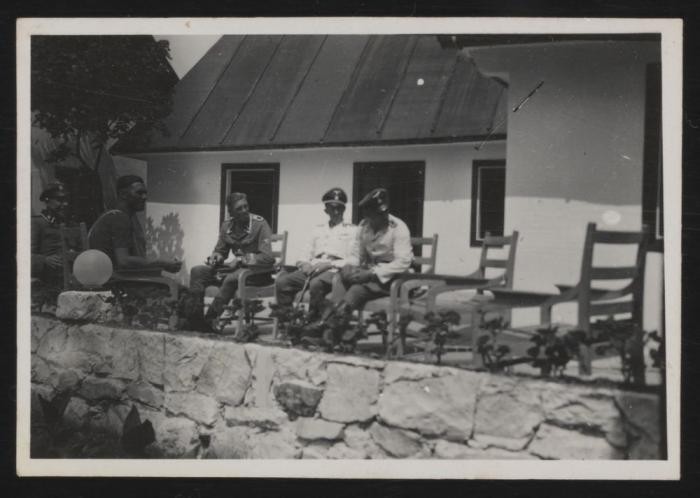
Members of the SS sitting on the terrace of the new officers' dining room (known as the "Kasino") in Sobibor, early summer 1943. From left to right: Hubert Gomerski, Erich Schulze, Gustav Wagner, deputy camp commandant Johann Niemann, and an unidentified man.
This photo comes from a collection donated by the descendants of Johann Niemann. The images in the collection provide never-before-seen views of the killing center, including photos of barracks buildings, workshops, and SS and Ukrainian guards. The album complements and re-enforces the testimonies of the few Jewish survivors of this notorious camp. Niemann was killed during the Sobibor prisoner revolt on October 14, 1943, after which the camp was closed and demolished.
Some of the images (like this one) depict Sobibor personnel laughing, relaxing, and posing for vanity shots all while implementing the mass murder of at least 167,000 innocent Jews.
Item View
We would like to thank Crown Family Philanthropies, Abe and Ida Cooper Foundation, the Claims Conference, EVZ, and BMF for supporting the ongoing work to create content and resources for the Holocaust Encyclopedia. View the list of donor acknowledgement.